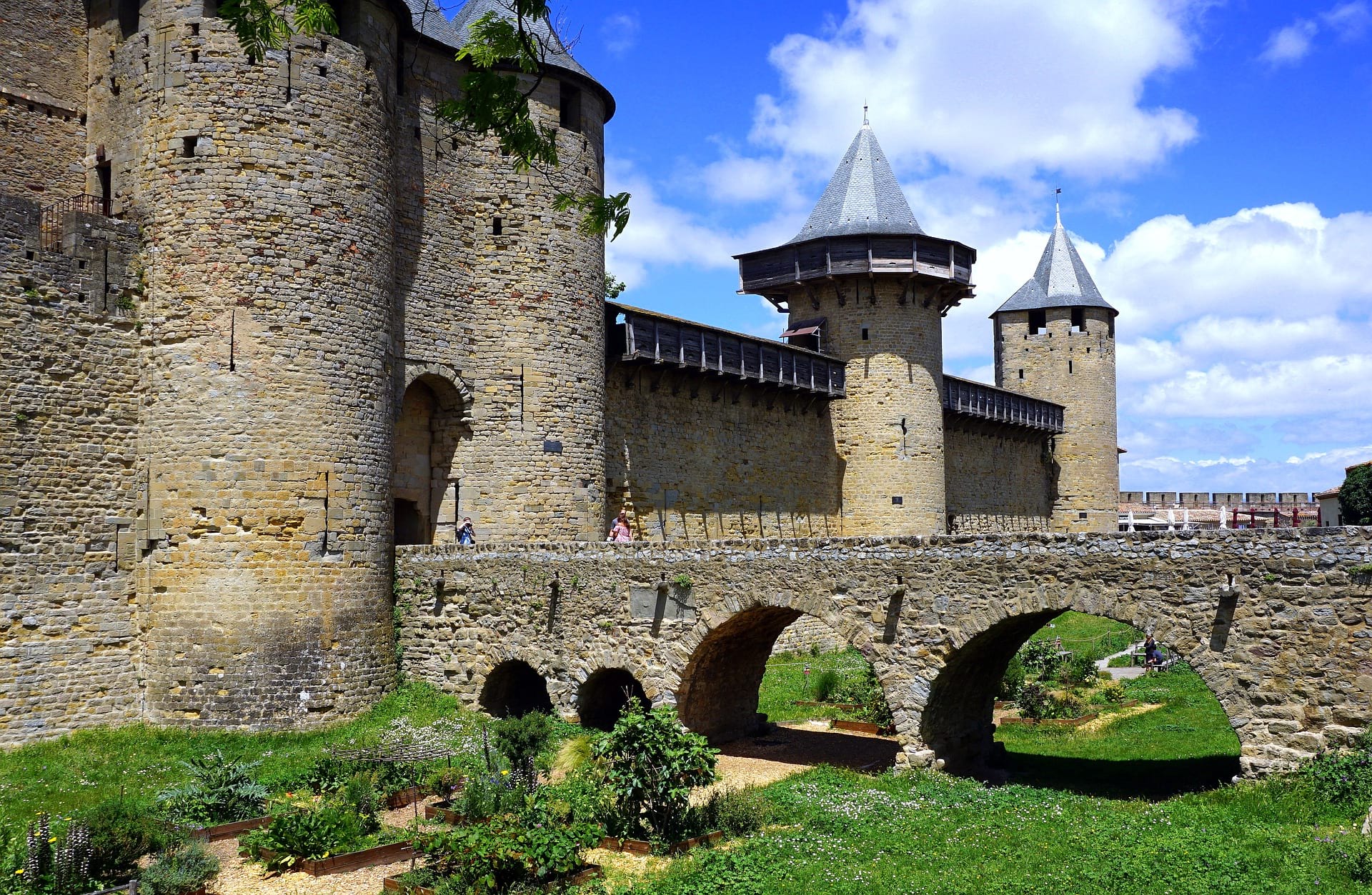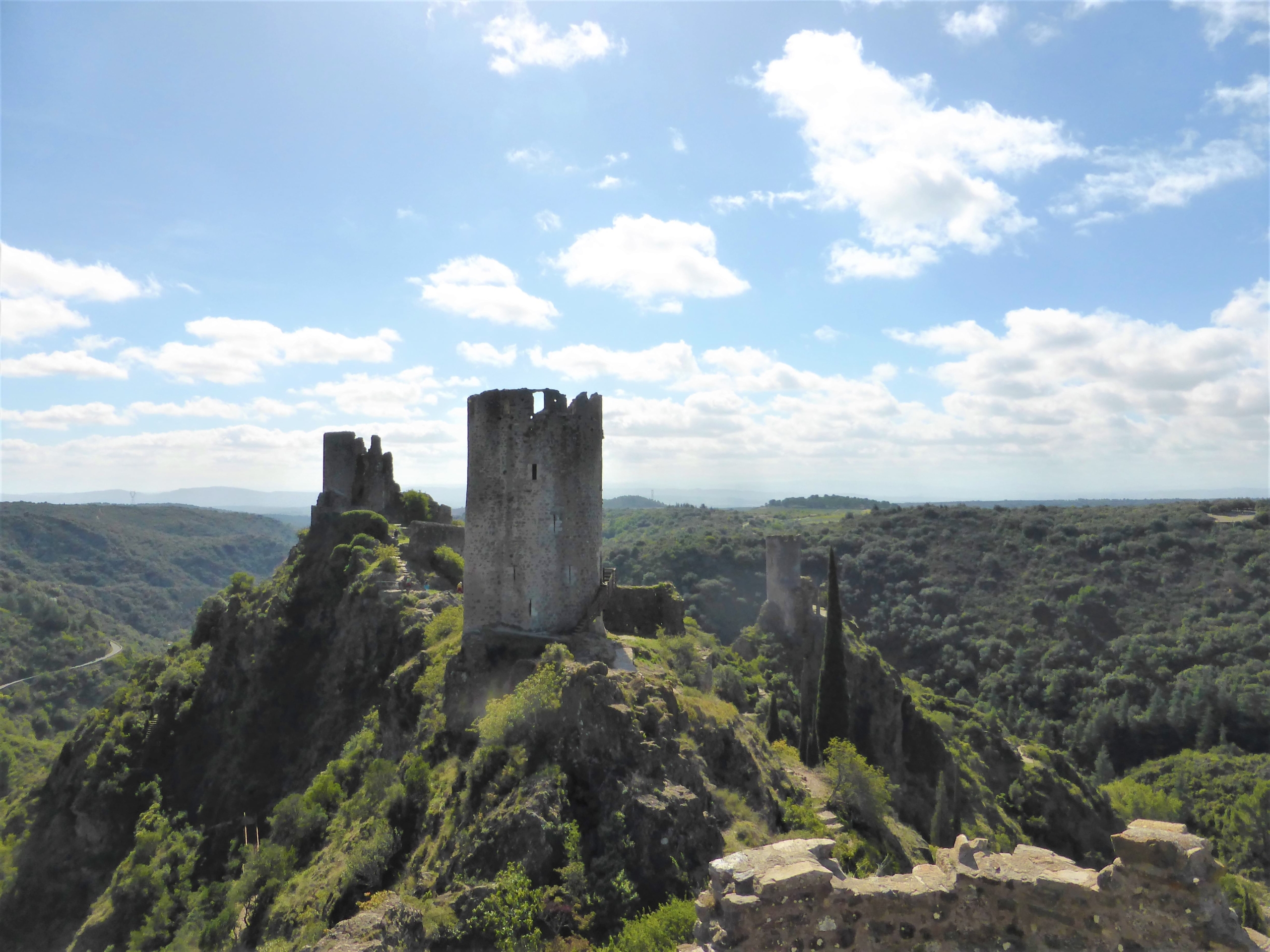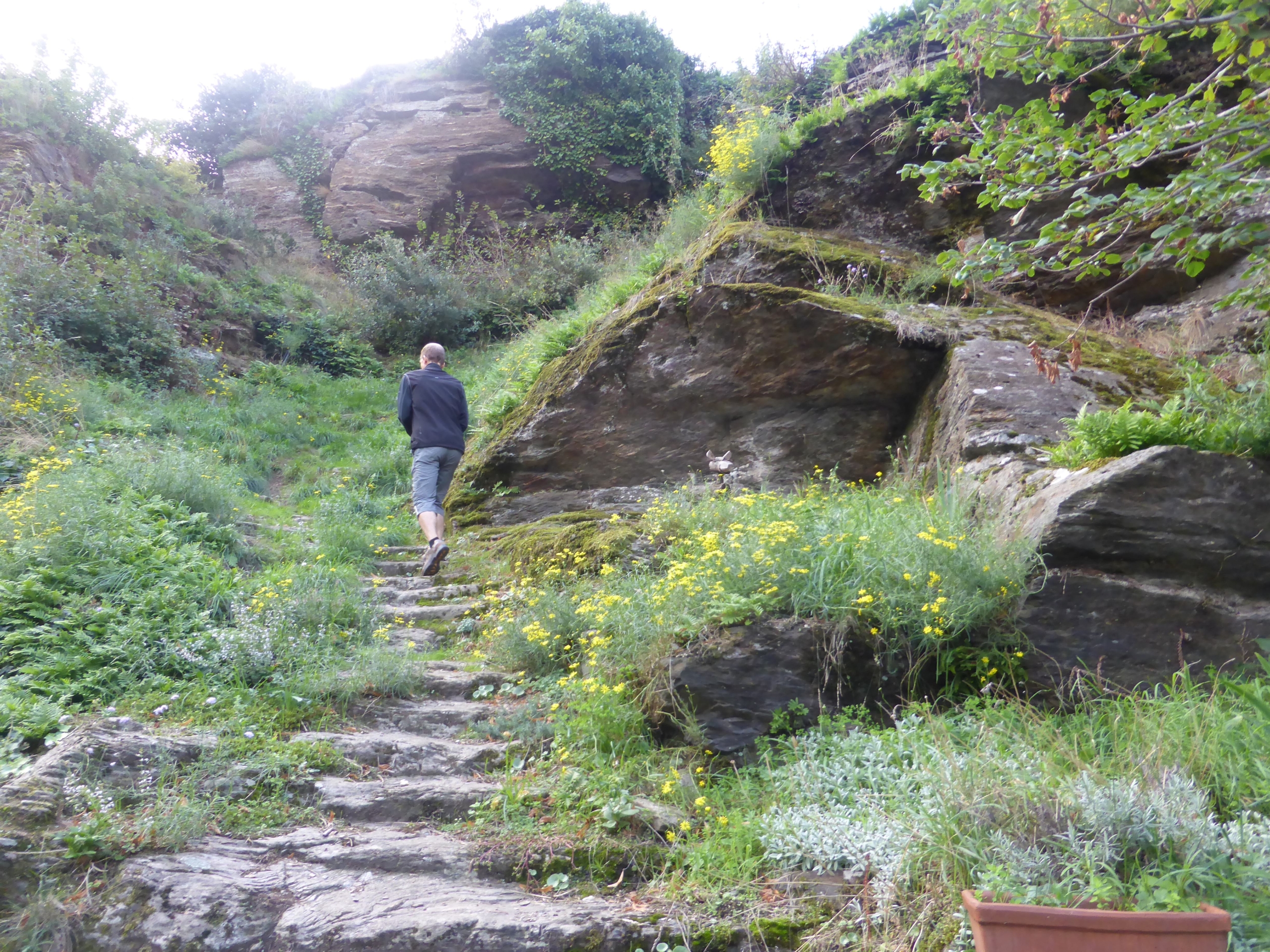Châteaux Overdose
With Colin Taylor
If you like visiting ruined châteaux, head north to the valley of the Orbiel. Just twenty minutes from Carcassonne is the village of Lastours. Red and gold Occitan flags flutter from lampposts alongside the river, and high on a ridge above the village, four separate châteaux stand in a line: Cabaret, Tour Régine, Surdespine and Quertinheux.
This stunning location (€8 entry fee) is an energetic visit requiring a good level of fitness.

The hillside is riddled with caves, one in particular has an unusual entrance to the main site. A 35-metre long tunnel called le Trou de la Cité took us through the side of the mountain, and when we emerged at the far end, we were able to enjoy our first full view of the four châteaux. They stand in a line atop a rugged hillside dotted with cypress trees.
During the Albigensian Crusade, this part of Occitanie was the home of two Cathar lords: Pierre-Roger de Cabaret and his brother Jourdain. After the fall of Carcassonne in 1209, the brothers provided a safe haven for Cathars and dispossessed knights. Together they carried out numerous attacks on the crusaders and their supply trains.


By 1211, Pierre-Roger de Cabaret realised that he was too isolated to resist indefinitely and he negotiated surrender terms with Simon de Montfort: he would give up his possessions at Cabaret/Lastours in exchange for a quiet life on an estate near Béziers.
Both sides respected the agreement until the death of Simon de Montfort in 1218 prompted the Cabaret brothers to return home. Before long, they were once again sheltering communities of heretics within their walls, including the Cathar bishop for the Carcassès.
During the second, royal, phase of the Albigensian Crusade, the Cabarets found themselves besieged once again. They resisted for two years, but in 1229 they surrendered and the king’s seneschal, Humbert de Beaujeu, destroyed their châteaux and villages.
Like many visitors to Lastours, I was disappointed to learn that the four ruins I was visiting had nothing to do with the Cabarets or the Cathars. They were all built during the 1230s to create a royal fortress that was garrisoned up until the time of the Revolution. So where did Pierre-Roger and Jourdain de Cabaret live? Probably in a fifth, older château lower down on the north-western slope of the mountain.

Below it, a medieval village was constructed on terraces which led all the way down to the banks of the Grésilhou. During the last thirty years, this village has been gradually excavated by archaeologists, and visitors can wander around the foundations of houses, stables, a forge and other buildings.
In some homes, the archaeologists found the remains of the occupants’ last meal, half-burned firewood in the hearth and various household items which led them to conclude that the village had abandoned in a moment of panic, probably when the Cabaret brothers surrendered in 1229.

After trudging up and down the steep, rocky slopes, why not round off your visit with a light lunch just outside the museum entrance? Le Diable au Thym is a café whose food comes out of the same kitchen as the Michelin-starred restaurant next door.
Still hungry for chateaux? More ruined pleasures await you further up the valley of the Orbiel. Climb the grassy terraces of the Château de Mas-Cabardès, take a peek at the Château de Roquefère (now a private residence), marvel at the surprisingly extensive ruins of a thirteenth-century church abandoned in the middle of nowhere, and finally, seven kilometres further up the valley from Lastours, climb the castle mound at Miraval-Cabardés, once the home of a famous troubadour*, Raimon de Miraval, who wrote love songs about the wives of Pierre-Roger and Jourdain de Cabaret.
| *A troubadour was a poet, songwriter and performer of Provencal and Occitan verse. The word actually comes from the Occitan word ‘trobar’ meaning ‘to compose’, or ‘to invent’ |


Thank you very much for this moment of Cathar history which interests me a lot.